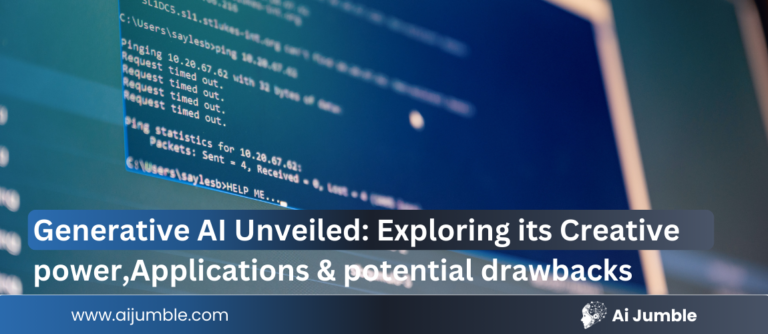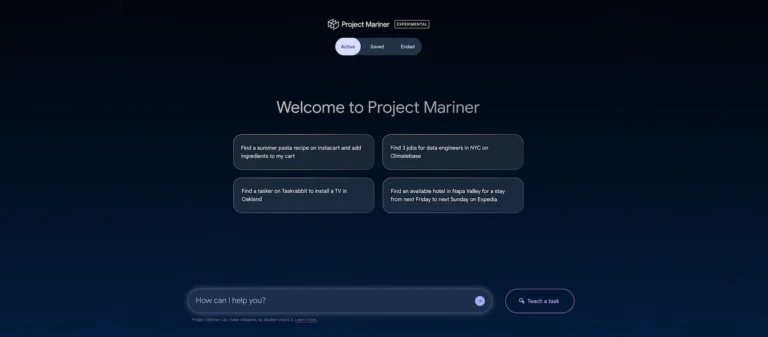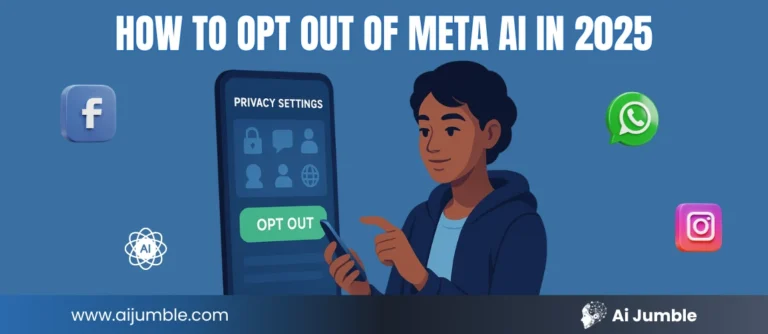Artificial Intelligence (AI) is no longer just a tool for high-tech organizations; it’s rapidly reshaping every sector and profession. One area where AI is having a profound impact is workforce development, specifically in upskilling and reskilling employees.
18% of the global workforce could be automated, according to Forbes. The growing gap between job requirements and employee skillsets has never been more apparent. To remain competitive, organizations and professionals must turn towards innovative solutions like AI to bridge the divide. Let’s explore how AI is transforming upskilling and reskilling through enhanced learning experiences, advanced workforce analysis, and accessible training opportunities.
The Skills Gap: A Growing Challenge
The skills gap highlights the disconnect between the skills employers need and the skills available in the workforce. Here’s why it matters and what’s driving it:
What is the Skills Gap?
A mismatch between the competencies sought by employers and those available in the labor market poses a significant challenge in today’s fast-evolving industries like healthcare, IT, and manufacturing.
Why Does the Skills Gap Exist?
- Rapid Technological Advancements: As technology continues to evolve at a rapid pace, the skills required by employers to remain competitive are also continuously changing. This makes it challenging for educational institutions to keep up with the demand and provide students with the most relevant skills.
- Demographic Changes: The aging workforce is another contributing factor to the skills gap. As older workers retire, there is a shortage of experienced professionals to fill their roles.
- Education-Industry Disconnect: There is often a disconnect between what is being taught in educational institutions and the current needs of industries. This leads to graduates lacking the necessary skills and knowledge required for available job opportunities.
- Unprepared Workforce: Many workers lack the modern skills needed to step into high-value, tech-driven roles.
- Impact of Automation and AI: While these systems handle repetitive tasks faster and more accurately, they also disrupt traditional roles.
Key Stats to Consider
- 87% of companies acknowledge existing skills gaps in their workforce (McKinsey & Company).
- Automation and AI are reshaping job demands, making some roles obsolete while creating entirely new ones.
How to Address the Skills Gap?
- Upskilling: Enhancing employees’ existing abilities to stay relevant in their roles.
- Reskilling: Training employees with entirely new skills to transition into different roles.
- Role of AI tools: AI-powered tools are revolutionizing both upskilling and reskilling processes, helping employees adapt faster to changing demands.
By understanding and addressing the skills gap, businesses and workers can thrive in the fast-changing labor market. It’s time to embrace upskilling and reskilling to close the gap and unlock new opportunities.
Here are a few AI Resources to bridge the gap between the demand and supply of skills:
AI for Reskilling
1. No-Code and Low-Code Platforms
One of the most exciting advancements in AI is the rise of no-code and low-code platforms, empowering non-technical professionals to drive digital innovation. These tools make it easier than ever to automate workflows, create custom AI models, and build applications without requiring advanced programming skills. Here’s a quick look at some popular platforms:
- Microsoft Power Apps: Build custom business applications quickly using a simple drag-and-drop interface.
- Google AutoML: Create machine learning models tailored to your needs, even without prior coding experience.
- Lobe.ai: Train custom image and recognition models with an intuitive and user-friendly setup.
By simplifying tasks traditionally handled by software engineers or data scientists, these platforms allow employees in various roles to step into tech-driven responsibilities. For example, a marketing professional can analyze customer data and create targeted ad campaigns using a no-code platform—no data science expertise needed. These tools are reshaping how businesses innovate, making technology more accessible than ever.
2. Automating Administrative Functions
For professionals considering a career shift, managing tasks like emails or scheduling can feel overwhelming. Fortunately, AI tools can simplify these tasks, freeing up time to focus on learning new skills and professional growth. Here’s a breakdown of useful AI tools:
- Taskade: An all-in-one productivity tool for task management, collaboration, and organization.
- Scribe: Helps create step-by-step guides from your workflows to simplify processes.
- Magical: Streamlines scheduling and automates repetitive tasks to save time.
These tools help reduce mundane tasks and allow employees to prioritize their training and growth.
AI for Upskilling
3. Personalized Learning Paths
Traditional learning systems often take a one-size-fits-all approach, overlooking individual learning styles, strengths, and gaps. AI-powered learning platforms address this by creating personalized pathways tailored to each user. These platforms analyze data like skillsets and learning pace to adjust recommendations in real-time, helping learners master topics without feeling overwhelmed.
Here are some AI-powered learning tools:
- Coursera: Offers personalized learning by recommending modules based on a learner’s progress, goals, and interests.
- Class Central: Uses AI to suggest courses and topics that align with a user’s preferences and pacing, making complex topics easier to tackle.
Real-Time Feedback
Real-time feedback is a critical feature of AI-powered learning tools, enabling learners to track their progress and identify areas that require improvement instantly. By analyzing user performance and providing immediate insights, these tools help create a more engaging and effective learning experience. Whether through automated grading, tailored hints, or actionable suggestions, real-time feedback ensures learners stay motivated and on the right path to achieving their goals.
- Real-time Feedback: AI provides instant feedback during the learning process, helping learners correct mistakes as they happen.
- Error Identification: AI tools can spot errors in real time, whether you’re coding or learning a new skill.
- Suggestions for Improvement: These tools offer actionable suggestions to enhance understanding and performance.
- Instant Guidance: AI acts like a personal tutor, guiding learners step-by-step for faster comprehension and more efficient learning.
4. Interactive Learning Experiences
AI isn’t just improving traditional text-based education; it’s revolutionizing learning through Virtual Reality (VR) and Natural Language Processing (NLP). These AI-powered tools create interactive, real-world simulations where learners can practice skills. Such experiences are especially valuable in fields like healthcare, construction, and customer service.
- Google AI Education: Offers intelligent simulations to help learners grasp complex concepts with ease, especially in industries requiring precision.
Identifying Skills Gaps with AI
Before upskilling or reskilling can take place, organizations need to identify where the skills gaps exist. AI tools play a crucial role in mapping these gaps by analyzing employee performance data, training history, and feedback to create actionable strategies.
5. Workforce Analysis
Companies like Microsoft and BT Group are leveraging AI to assess their talent pool effectively. For instance, Microsoft’s Get On program has equipped over 2.5 million people in the UK with digital skills. Similarly, FastFutures, a partnership by Avado and BT Group, prepares underrepresented individuals for careers in tech through practical, AI-driven skill-building experiences.
Recommended Learning Pathways
AI-powered systems like Iris.ai and Pymetrics help HR departments create tailored recommendations based on an individual employee’s needs and potential. Such AI platforms can group employees into cohorts for personalized training, ensuring no one is left behind in the digital economy.
Democratizing AI Education
Creating Affordable Access
Cloud-based AI platforms and open-source frameworks have made skills training more accessible and affordable for organizations and individuals alike. Here’s a breakdown of some key tools:
Cloud-based AI Platforms:
- Google Cloud AI: Offers a suite of AI tools and services that enable businesses to build and deploy AI solutions without investing in costly infrastructure.
- AWS SageMaker: Simplifies machine learning deployment with tools to train and deploy models at scale, tailored for businesses of all sizes.
- Microsoft Azure: Provides AI and machine learning services to create intelligent applications with high scalability and security.
Open-source AI Frameworks:
- Hugging Face: Specializes in natural language processing (NLP), offering open-source models and tools for tasks like text generation and translation.
- TensorFlow: A versatile, open-source machine learning framework widely used for building AI models, from beginners to advanced practitioners.
These tools are breaking down economic barriers, making cutting-edge technology accessible to learners and businesses at every level.
MOOCs and Online Courses
Massive Open Online Courses (MOOCs) are revolutionizing AI education by making it accessible and affordable for everyone, regardless of location. Here’s a quick breakdown of some popular platforms and initiatives:
- EdX: Offers high-quality AI courses from top universities like MIT and Harvard, accessible to learners worldwide at low costs.
- Udemy: Provides a wide range of AI courses, including beginner-friendly options, often at affordable prices with lifetime access.
- LinkedIn Learning: Features job-focused AI courses designed to help professionals upskill and stay competitive in the AI-driven economy.
Additionally, initiatives like Andrew Ng’s AI-focused lectures and global education hubs are delivering world-class resources to individuals who previously lacked access, bridging the gap between talent and opportunity.
Preparing for the Future of Work
The era of automation isn’t a distant reality; it’s happening now. To thrive in this new landscape, employees and organizations must place continuous learning at the forefront of their strategy. AI offers unparalleled opportunities to support this transformation, providing scalable, personalized, and innovative solutions for upskilling and reskilling.
Whether you’re looking to enhance current skills or pivot to an entirely new career path, AI ensures that knowledge access becomes a right—not a privilege. Organizations that invest in AI-driven training programs will create a more agile, competitive workforce ready to meet the challenges of tomorrow.
Start closing the skills gap today by exploring AI tools designed specifically for workforce transformation.
Stay Updated on the Latest in AI
New AI tools are launching every day — we make sure you’re the first to know. Join a growing community exploring 5,000+ AI tools, with new ones added daily.






